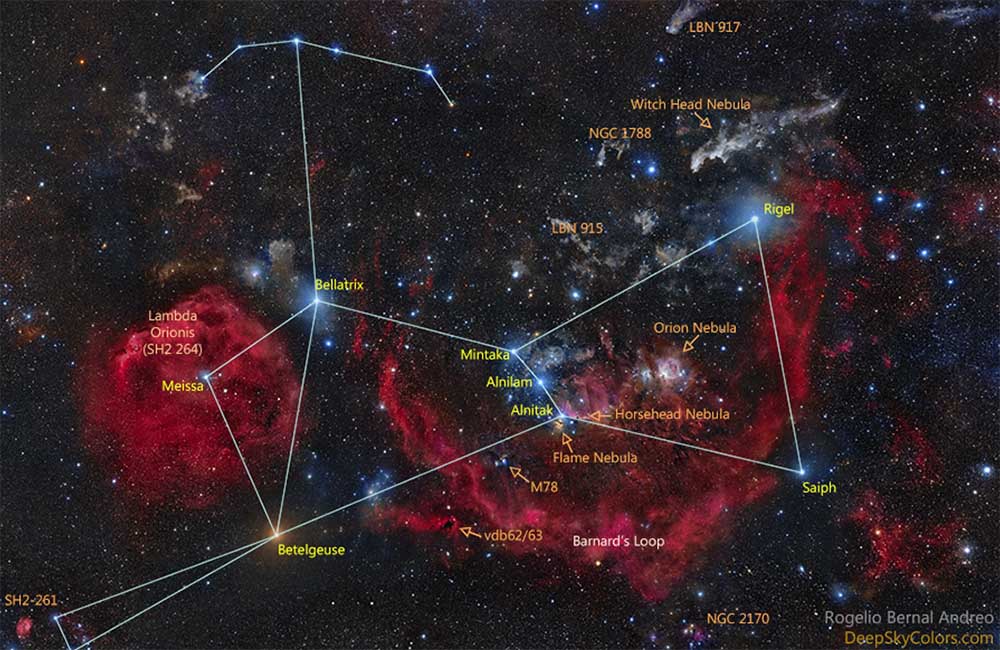

Betelgeuse is a red supergiant of spectral type M1-2 and one of the largest stars visible to the naked eye. It is usually the tenth-brightest star in the night sky and, after Rigel, the second-brightest in the constellation of Orion.
Bright star Betelgeuse likely has a 'Betelbuddy' stellar companion PhysOrg - October 21, 2024

Betelgeuse's mysterious spin could be a cosmic illusion caused by its enormous 'boiling' surface Live Science - March 19, 2024
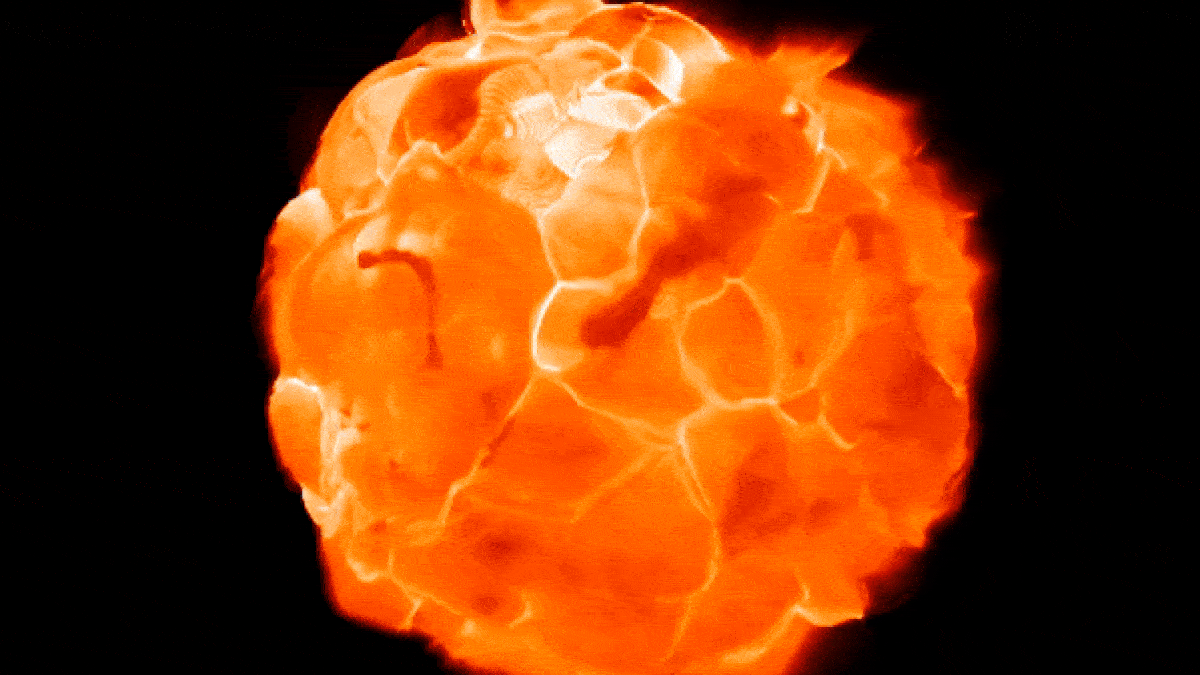
A Stunning Revelation Could Mean Betelgeuse Is Set to Blow Science Alert - July 3, 2023
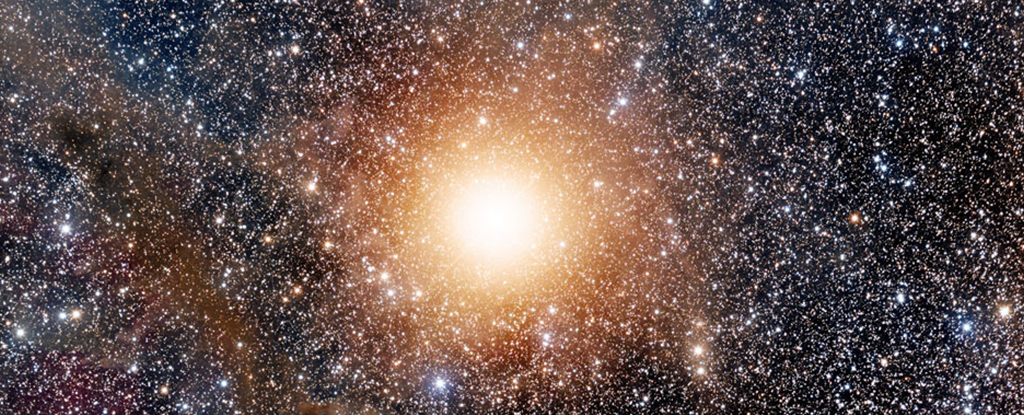
Red Supergiant Star Betelgeuse Was Yellow Just 2,000 Years Ago PhysOrg - September 6, 2022
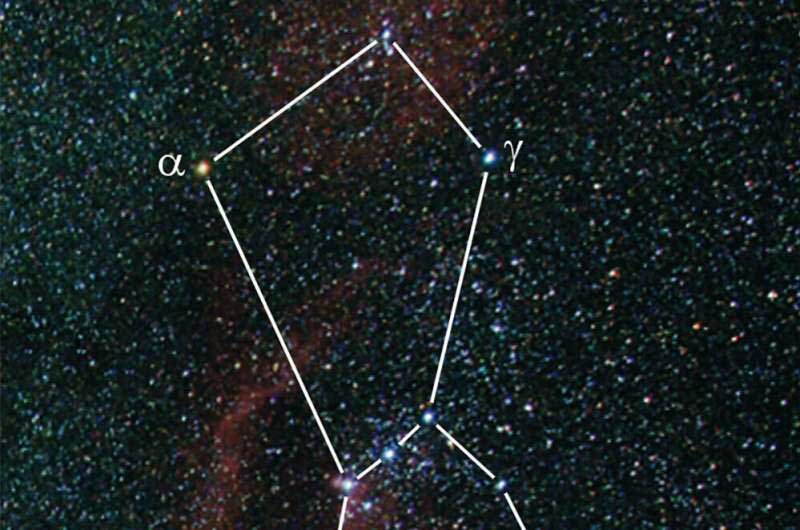
New study sheds light on the mysterious dimming of Betelgeuse in the constellation Orion. PhysOrg - August 6, 2021
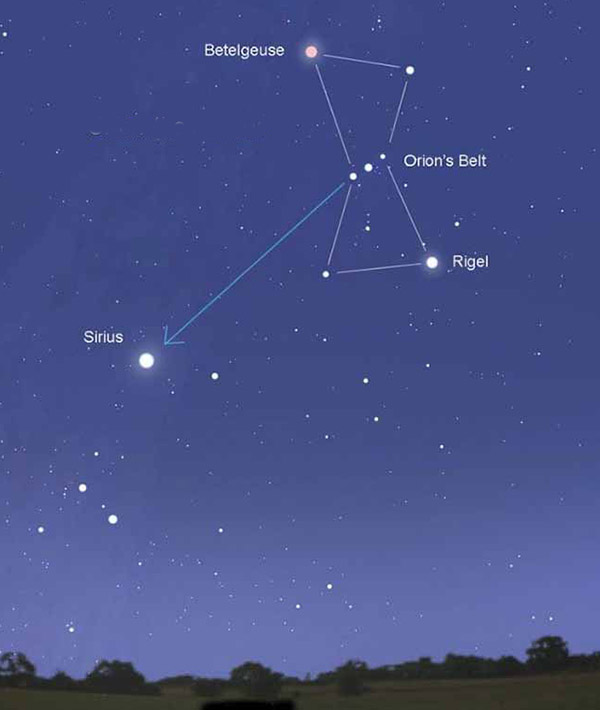
Rigel, also known as Beta Orionis, is a B-type blue supergiant that is the sixth brightest star in the night sky. Similar to Betelgeuse, Rigel is fusing heavy elements in its core and will pass its supergiant stage soon (on an astronomical timescale), either collapsing in the case of a supernova or shedding its outer layers and turning into a white dwarf. It serves as the left foot of Orion, the hunter.
Bellatrix was designated Gamma Orionis by Johann Bayer, but is known colloquially as the "Amazon Star". It is the twenty-seventh brightest star in the night sky. Bellatrix is considered a B-type blue giant, though it is too small to explode in a supernova. Bellatrix's luminosity is derived from its high temperature rather than its radius, a factor that defines Betelgeuse. Bellatrix serves as Orion's left shoulder.
Mintaka garnered the name Delta Orionis from Bayer, even though it is the faintest of the three stars in Orion's Belt. Its name means "the belt". It is a multiple star system, composed of a large B-type blue giant and a more massive O-type main-sequence star. The Mintaka system constitutes an eclipsing binary variable star, where the eclipse of one star over the other creates a dip in brightness. Mintaka is the westernmost of the three stars of Orion's Belt, as well as the northernmost.
Alnilam is designated Epsilon Orionis, a consequence of Bayer's wish to name the three stars in Orion's Belt (from north to south) in alphabetical order. Also called Al Nathin, Alnilam is named for the Arabic phrase meaning "string of pearls". Alnilam is a B-type blue supergiant; despite being nearly twice as far from the Sun as Mintaka and Alnitak, the other two belt stars, its luminosity makes it nearly equal in magnitude. Alnilam is losing mass quickly, a consequence of its size; it is approximately four million years old.
Alnitak, meaning "the girdle", was designated Zeta Orionis by Bayer, and is the easternmost star in Orion's Belt. It is a triple star some 800 light years distant, with the primary star being a hot blue supergiant and the brightest class O star in the night sky.
Saiph was designated Kappa Orionis by Bayer, and serves as Orion's right foot. It is of a similar distance and size to Rigel, but appears much fainter, as its hot surface temperature (46,000 °F or 26,000 °C) causes it to emit most of its light in the ultraviolet region of the spectrum.
Of the lesser stars, Meissa (or Lambda Orionis) forms Orion's head, while Hatsya (or Iota Orionis) forms the tip of Orion's sword. Iota Orionis is also called Nair al-Saif, Arabic for "the brightest in the sword".
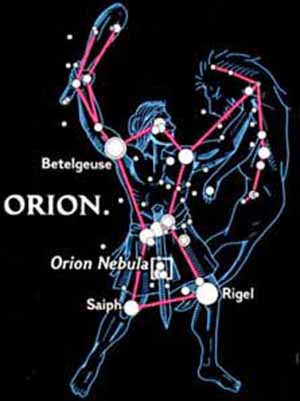
The configurations of the constellation Orion roughly formed about 1.5 million years ago, because of relative slow movements of stars within the constellation from earth's perspective (especially the belt of Orion), constellation Orion will remain visible in the night sky for the next 1 to 2 million years, making the constellation one of the longest observable constellation parallel to the rise of human civilization.
Being so bright and distinctive, the pattern of stars that form Orion were recognized as a coherent constellation by many ancient civilizations, though with different representations and mythologies.
The ancient Sumerians saw this star pattern as a sheep, while in ancient China, Orion was one of the 28 zodiac signs Xiu. Known as Shen its literally meaning is "three", it is believed to be named so for the three stars located in Orion's belt.
The "belt and sword" of Orion are frequently referred to in ancient and modern literature, and even found recognition as the shoulder insignia of the 27th Infantry Division of the United States Army during both World Wars, probably because the division's first commander was Major General John F. O'Ryan.
Orion is a prominent constellation located on the celestial equator and visible throughout the world. It is one of the most conspicuous and recognizable constellations in the night sky. It was named after Orion, a hunter in Greek mythology. Its brightest stars are Rigel (Beta Orionis) and Betelgeuse (Alpha Orionis), a blue-white and a red supergiant, respectively.
The earliest depiction that has been linked to the constellation of Orion is a prehistoric (Aurignacian) mammoth ivory carving found in a cave in the Ach valley in West Germany in 1979. Archaeologists have estimated it to have been fashioned approximately 32,000 to 38,000 years ago. The distinctive pattern of Orion has been recognized in numerous cultures around the world, and many myths have been associated with it. It has also been used as a symbol in the modern world.
The Babylonian star catalogues of the Late Bronze Age name Orion SIPA.ZI.AN.NA "The Heavenly Shepherd" or "True Shepherd of Anu" - Anu being the chief god of the heavenly realms. The Babylonian constellation was sacred to Papshukal and Ninshubur, both minor gods fulfilling the role of 'messenger to the gods'. Papshukal was closely associated with the figure of a walking bird on Babylonian boundary stones, and on the star map the figure of the Rooster was located below and behind the figure of the True Shepherd—both constellations represent the herald of the gods, in his bird and human forms respectively.
In ancient Egypt, the stars of Orion were regarded as a god, called Sah. Because Orion rises before Sirius, the star whose heliacal rising was the basis for the Solar Egyptian calendar, Sah was closely linked with Sopdet, the goddess who personified Sirius. The god Sopdu was said to be the son of Sah and Sopdet. Sah was syncretized with Osiris, while Sopdet was syncretized with Osiris' mythological wife, Isis. In the Pyramid Texts, from the 24th and 23rd centuries BC, Sah was one of many gods whose form the dead pharaoh was said to take in the afterlife.
The Armenians identified their legendary patriarch and founder Hayk with Orion. Hayk is also the name of the Orion constellation in the Armenian translation of the Bible.
The Bible mentions Orion three times, naming it "Kesil" - (literally the fool). Though, this name perhaps is etymologically connected with "Kislev", the name for the ninth month of the Hebrew calendar (i.e. November–December), which, in turn, may derive from the Hebrew root K-S-L as in the words "kesel, kisla" (hope, positiveness). i.e. hope for winter rains.): Job 9:9 ("He is the maker of the Bear and Orion"), Job 38:31 ("Can you loosen Orion's belt?"), and Amos 5:8 ("He who made the Pleiades and Orion").
In ancient Aram, the constellation was known as Nephila, Orion's descendants were known as Nephilim.
Orion's current name derives from Greek mythology, in which Orion was a gigantic, supernaturally strong hunter of ancient times, born to Euryale, a Gorgon, and Poseidon (Neptune), god of the sea in the Graeco-Roman tradition. One myth recounts Gaia's rage at Orion, who dared to say that he would kill every animal on the planet. The angry goddess tried to dispatch Orion with a scorpion. This is given as the reason that the constellations of Scorpius and Orion are never in the sky at the same time. However, Ophiuchus, the Serpent Bearer, revived Orion with an antidote. This is said to be the reason that the constellation of Ophiuchus stands midway between the Scorpion and the Hunter in the sky. The constellation is mentioned in Horace's Odes (Ode 3.27.18), Homer's Odyssey (Book 5, line 283) and Iliad, and Virgil's Aeneid (Book 1, line 535).
In medieval Muslim astronomy, Orion was known as al-jabbar, "the giant". Orion's sixth brightest star, Saiph, is named from the Arabic, saif al-jabbar, meaning "sword of the giant".
In China, Orion was one of the 28 lunar mansions Sieu. It is known as Shen literally meaning "three", for the stars of Orion's Belt. There is a Chinese character which originally meant the constellation Orion. its Shang dynasty version, over three millennia old, contains at the top a representation of the three stars of Orion's belt atop a man's head (the bottom portion representing the sound of the word was added later).
The Rig Veda refers to the Orion Constellation as Mriga (The Deer). It is said that two bright stars in the front and two bright stars in the rear are The hunting dogs, the one comparatively less bright star in the middle and ahead of two front dogs is The hunter and three aligned bright stars are in the middle of all four hunting dogs is The Deer (The Mriga) and three little aligned but less brighter stars is The Baby Deer. The Mriga means Deer, locally known as Harnu in folk parlance. There are many folk songs narrating the Harnu. The Malay called Orion' Belt Bintang Tiga Beradik (the "Three Brother Star").
In old Hungarian tradition, "Orion" is known as (magic) Archer or Reaper. In recently rediscovered myths he is called Nimrod (Hungarian "Nimrod") the greatest hunter, father of the twins "Hunor" and "Magor". The "Ļ" and "o" stars (on upper right) form together the reflex bow or the lifted scythe. In other Hungarian traditions, "Orion's belt" is known as "Judge's stick".
In Scandinavian tradition, "Orion's belt" was known as Frigg's Distaff (friggerock) or Freyja's distaff. In pre-Christian Scandinavia, the "Orion's belt" portion of the constellation was known as Frigg's Distaff (Friggerock) or Freyja's distaff.
In Finnish mythology the constellation of Orion is called the scythe of Vainamoinen. The term most likely comes from the fact it can be seen in the sky in early autumn in the Northern Hemisphere, the time of haymaking. The Finns call the Orion's belt and the stars below it as Vainamoinen's Scythe.
In Siberia, the Chukchi people see Orion as a hunter; an arrow he has shot is represented by Aldebaran (Alpha Tauri), with the same figure as other Western depictions.
The Seri people of northwestern Mexico call the three stars in the belt of Orion Hapj (a name denoting a hunter) which consists of three stars: Hap (mule deer), Haamoja (pronghorn), and Mojet (bighorn sheep). Hap is in the middle and has been shot by the hunter; its blood has dripped onto Tiburon Island.
The same three stars are known in Spain and most of Latin America as "Las tres Marías" (Spanish for "The Three Marys"). In Puerto Rico, the three stars are known as the "Los Tres Reyes Magos" (Spanish for The three Wise Men).
The Ojibwa (Chippewa) Native Americans call this constellation Kabibona'kan, the Winter Maker, as its presence in the night sky heralds winter.
To the Lakota Native Americans, Tayamnicankhu (Orion's Belt) is the spine of a bison. The great rectangle of Orion are the bison's ribs; the Pleiades star cluster in nearby Taurus is the bison's head; and Sirius in Canis Major, known as Tayamnisinte, is its tail.
Orion is also important in Australian Aboriginal Astronomy. For example, the Yolngu people of Arnhem Land say that the constellation of Orion, which they call Julpan, is a canoe. They tell the story of two brothers who went fishing, and caught and ate a fish that was forbidden under their law. Seeing this, the Sun sent a waterspout that carried the two brothers and their canoe up into the sky where they became the Orion constellation.
Aliens from Orion are one of many races that allegedly visited Earth in the past and perhaps still do - connected to humanity's destiny. They are often known as Orion warriors and are sometimes connected with ancient mythologies and creation. They have also been referenced in science fiction. There is something about seeing the name Orion that triggers the soul to associate ...
There is something about the Orion-Earth Matrix that has greater meaning. I'll never forget the scene in the film Stargate when Daniel Jackson (James Spader ) realizes that Orion is the key to opening the Stargate. The musical score still lingers in my mind.
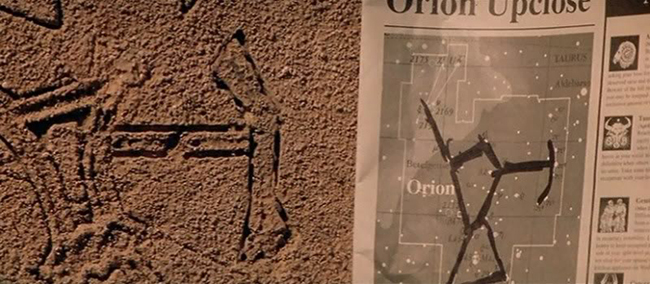
Orion is also mentioned in the film "Men in Black 2"
The Orions, also known as the Orion Syndicate, are a fictional extraterrestrial humanoid species in the American science fiction franchise Star Trek, making their first appearance in the initial Star Trek: The Original Series pilot, "The Cage". Susan Oliver portrayed the first Orion seen on screen, when her human character Vina was transformed into one, although it was Majel Barrett who underwent the original makeup test. The footage was subsequently used in the two-part episode "The Menagerie". Yvonne Craig, who was considered for the part of Vina, later played an Orion in "Whom Gods Destroy".
Male Orions made their first appearance in the Star Trek: The Animated Series episode "The Pirates of Orion" but did not appear in live action until the Star Trek: Enterprise episode "Borderland", which also featured female Orions. More recently, Orion women have been seen in the films Star Trek and Star Trek Into Darkness. Females of the species have become known as Orion slave girls, who have become popular among fans for cosplay. These slave girls have been received negatively by critics, who have suggested that they are too sexual and that the in-universe reactions to them expresses a lack of sexual diversity among Star Trek characters.

The Galactic Center takes us to Simulation Theory
Orion's Belt or The Belt of Orion is an asterism - pattern of stars recognized in the Earth's night sky - within the constellation. It consists of the three bright stars Zeta (Alnitak), Epsilon (Alnilam), and Delta (Mintaka). Alnitak is around 800 light years away from earth and is 100,000 times more luminous than the Sun; much of its radiation is in the ultraviolet range, which the human eye cannot see.
Alnilam is approximately 1340 light years away from Earth, shines with magnitude 1.70, and with ultraviolet light is 375,000 times more luminous than the Sun.
Mintaka is 915 light years away and shines with magnitude 2.21. It is 90,000 times more luminous than the Sun and is a double star: the two orbit each other every 5.73 days. Looking for Orion's Belt in the night sky is the easiest way to locate the constellation. In the Northern Hemisphere, Orion's Belt is best visible in the night sky during the month of January around 9:00 pm, when it is approximately around the local meridian.
Just southwest of Alnitak lies Sigma Orionis, a multiple star system composed of five stars that have a combined apparent magnitude of 3.7 and lying 1150 light years distant. Southwest of Mintaka lies the quadruple star Eta Orionis.
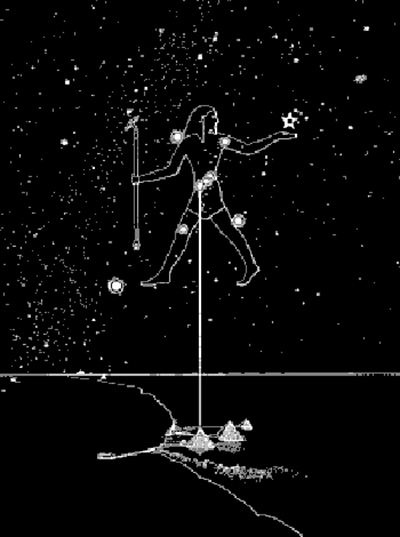
Orion has connections to the journey of humanity - sacred markers indicating the way. The connection between Orion and Earth is created by a blueprint or architectural design following the patterns of sacred geometry. This in turn links with Ancient Alien Theory, and the world world energy grid. Reality is a Grid or Matrix that aligns to create experiences.
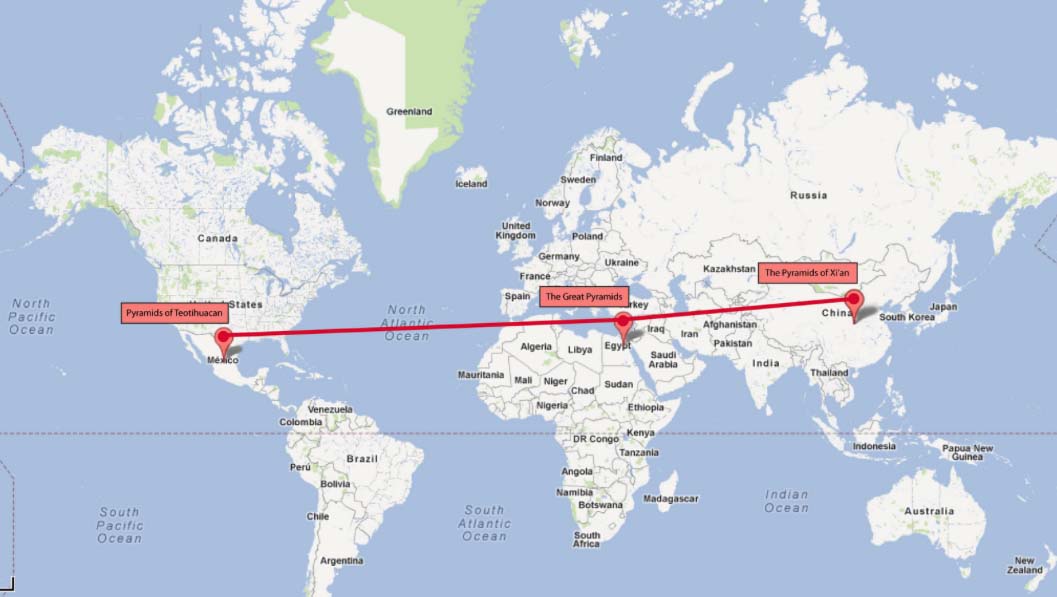
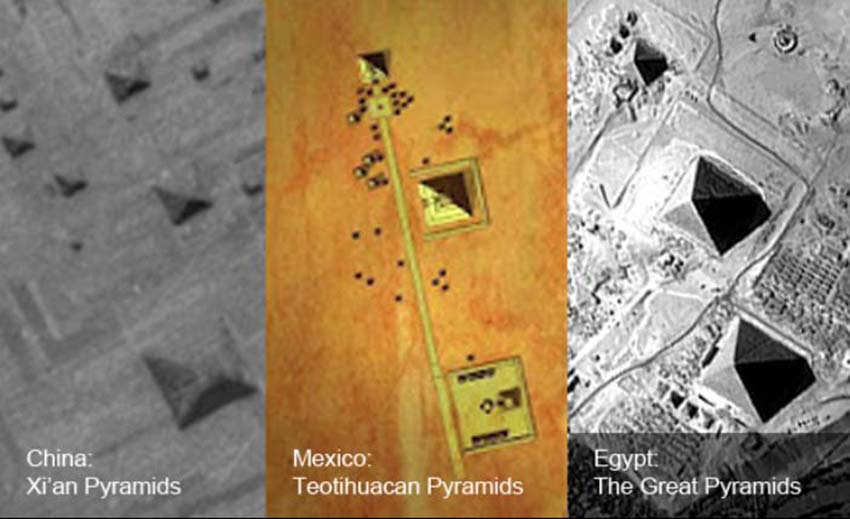
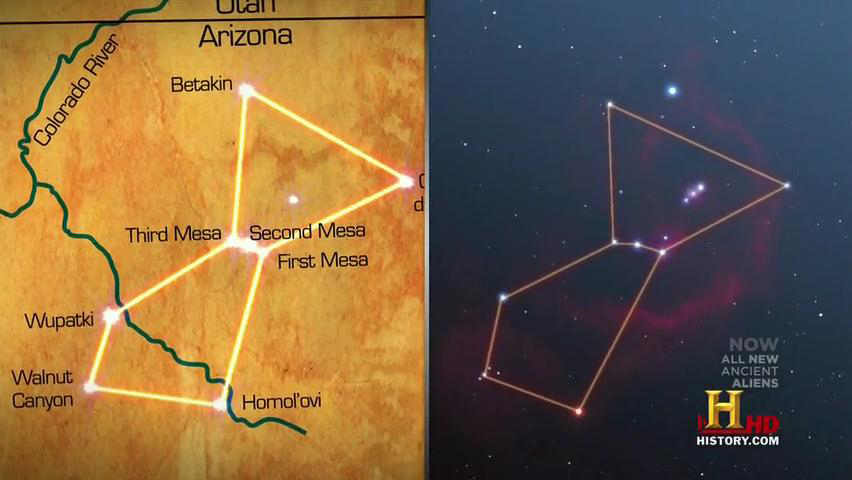

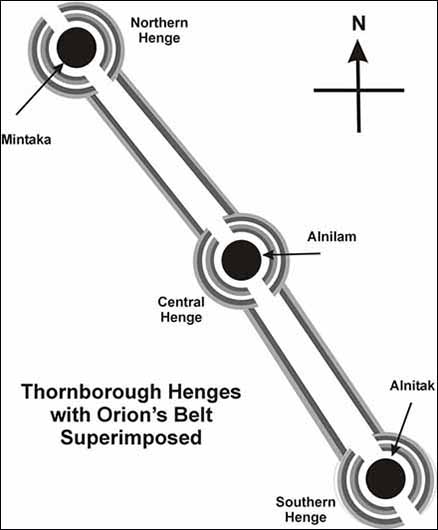
Egypt - the Giza Plateau - Ancient Egyptians claimed their gods came from the Belt Stars of Orion which is Osiris and Sirius which is Isis in the duality of our design.
Mesoamerica - pyramid complex at Teotihuacan
China - Xi'an Pyramids - White Pyramid
Anasazi "Star Cities" in the American southwest
Thornborough Henges a neolithic complex in North Yorkshire, England that date from between 3500 and 2500 BC. - this monument complex has been called 'The Stonehenge of the North'.
The Orion Nebula (also known as Messier 42, M42, or NGC 1976) is a diffuse nebula situated in the Milky Way, being south of Orion's Belt in the constellation of Orion. It is one of the brightest nebulae, and is visible to the naked eye in the night sky. M42 is located at a distance of 1,344 Ī 20 light years and is the closest region of massive star formation to Earth. The M42 nebula is estimated to be 24 light years across. It has a mass of about 2000 times the mass of the Sun. Older texts frequently refer to the Orion Nebula as the Great Nebula in Orion or the Great Orion Nebula.
The Orion Nebula is one of the most scrutinized and photographed objects in the night sky, and is among the most intensely studied celestial features. The nebula has revealed much about the process of how stars and planetary systems are formed from collapsing clouds of gas and dust. Astronomers have directly observed protoplanetary disks, brown dwarfs, intense and turbulent motions of the gas, and the photo-ionizing effects of massive nearby stars in the nebula.
There has been speculation that the Mayans of Central America may have described the nebula within their "Three Hearthstones" creation myth; if so, the three would correspond to two stars at the base of Orion, Rigel and Saiph, and another, Alnitak at the tip of the "belt" of the imagined hunter, the vertices of a nearly perfect equilateral triangle[vague] with Orion's Sword (including the Orion Nebula) in the middle of the triangle seen as the smudge of smoke from copal incense in a modern myth, or, in (the translation it suggests of) an ancient one, the literal or figurative embers of a fiery creation.
Neither Ptolemy's Almagest nor Al Sufi's Book of Fixed Stars noted this nebula, even though they both listed patches of nebulosity elsewhere in the night sky; nor did Galileo mention it, even though he also made telescopic observations surrounding it in 1610 and 1617. This has led to some speculation that a flare-up of the illuminating stars may have increased the brightness of the nebula.
The first discovery of the diffuse nebulous nature of the Orion Nebula is generally credited to French astronomer Nicolas-Claude Fabri de Peiresc, on 26 November 1610 when he made a record of observing it with a refracting telescope purchased by his patron Guillaume du Vair.
The first published observation of the nebula was by the Jesuit mathematician and astronomer Johann Baptist Cysat of Lucerne in his 1619 monograph on the comets (describing observations of the nebula that may date back to 1611). He made comparisons between it and a bright comet seen in 1618 and described how the nebula appeared through his telescope as:
"one sees how in like manner some stars are compressed into a very narrow space and how round about and between the stars a white light like that of a white cloud is poured out". His description of the center stars as different from a comet's head in that they were a "rectangle" may have been an early description of the Trapezium Cluster. The first detection of three of the four stars of this cluster is credited to Galileo Galilei in a February 4, 1617 although he did not notice the surrounding nebula - possibly due to the narrow field of vision of his early telescope.
The nebula was independently discovered by several other prominent astronomers in the following years, including by Giovanni Battista Hodierna whose sketch was the first published in De systemate orbis cometici, deque admirandis coeli characteribus.
Charles Messier first noted the nebula on March 4, 1769, and he also noted three of the stars in Trapezium. Messier published the first edition of his catalog of deep sky objects in 1774 (completed in 1771). As the Orion Nebula was the 42nd object in his list, it became identified as M42.
In 1865 English amateur astronomer William Huggins used his visual spectroscopy method to examine the nebula showing it, like other nebulae he had examined, was made up of "luminous gas". On September 30, 1880 Henry Draper used the new dry plate photographic process with an 11-inch (28 cm) refracting telescope to make a 51-minute exposure of the Orion Nebula, the first instance of astrophotography of a nebula in history. Another set of photographs of the nebula in 1883 saw breakthrough in astronomical photography when amateur astronomer Andrew Ainslie Common used the dry plate process to record several images in exposures up to 60 minutes with a 36-inch (91 cm) reflecting telescope that he constructed in the backyard of his home in Ealing, outside London. These images for the first time showed stars and nebula detail too faint to be seen by the human eye.
In 1902, Vogel and Eberhard discovered differing velocities within the nebula and by 1914 astronomers at Marseilles had used the interferometer to detect rotation and irregular motions. Campbell and Moore confirmed these results using the spectrograph, demonstrating turbulence within the nebula.
In 1931, Robert J. Trumpler noted that the fainter stars near the Trapezium formed a cluster, and he was the first to name them the Trapezium cluster. Based on their magnitudes and spectral types, he derived a distance estimate of 1,800 light years. This was three times farther than the commonly accepted distance estimate of the period but was much closer to the modern value.
In 1993, the Hubble Space Telescope first observed the Orion Nebula. Since then, the nebula has been a frequent target for HST studies. The images have been used to build a detailed model of the nebula in three dimensions. Protoplanetary disks have been observed around most of the newly formed stars in the nebula, and the destructive effects of high levels of ultraviolet energy from the most massive stars have been studied.
In 2005, the Advanced Camera for Surveys instrument of the Hubble Space Telescope finished capturing the most detailed image of the nebula yet taken. The image was taken through 104 orbits of the telescope, capturing over 3,000 stars down to the 23rd magnitude, including infant brown dwarfs and possible brown dwarf binary stars. A year later, scientists working with the HST announced the first ever masses of a pair of eclipsing binary brown dwarfs, 2MASS J05352184–0546085. The pair are located in the Orion Nebula and have approximate masses of 0.054 M and 0.034 M respectively, with an orbital period of 9.8 days. Surprisingly, the more massive of the two also turned out to be the less luminous.
Orion is located on the celestial equator, but it will not always be so located due to the effects of precession of the Earth's axis. Orion lies well south of the ecliptic, and it only happens to lie on the celestial equator because the point on the ecliptic that corresponds to the June solstice is close to the border of Gemini and Taurus, to the north of Orion. Precession will eventually carry Orion further south, and by AD 14000 Orion will be far enough south that it will become invisible from the latitude of Great Britain.
Further in the future, Orion's stars will gradually move away from the constellation due to proper motion. However, Orion's brightest stars all lie at a large distance from the Earth on an astronomical scale - much farther away than Sirius, for example. Orion will still be recognizable long after most of the other constellations - composed of relatively nearby stars - have distorted into new configurations, with the exception of a few of its stars eventually exploding as supernovae, for example Betelgeuse, which is predicted to explode sometime in the next million years.
When it comes to dramatic and awe-inspiring pictures of space, few can contend with what appears to be a pic of, well, nothing at all: a fascinating image of what seems to be a hole in the fabric of space, taken by the NASA/ESA Hubble Space Telescope Science Alert - October 27, 2022
Described as a "cosmic keyhole" by experts, the phenomenon caught by the telescope is what's known as a reflection nebula - part of the debris left behind by the formation of a newborn star, or in this case, a small, multiple star system known as V380 Orionis in the constellation Orion.
The famous Horsehead Nebula (also known as Barnard 33' in bright nebula IC 434) is a dark nebula in the Orion constellation. The nebula is located just below Alnitak, the easternmost star of Orion's Belt, and is part of the much larger Orion Molecular Cloud Complex. It is approximately 1,500 light years from Earth, and is approximately 3.5 light years wide. One of the most identifiable nebulae in the sky, it is part of a swirling cloud of dark dust and gases, shaped like a horse's head (hence its name). Also known as Barnard 33, the unusual shape was first discovered in 1888 by Mrs. Williamina Fleming on photographic plate B2312 taken at the Harvard College Observatory. The red glow originates from hydrogen gas predominantly behind the nebula, ionized by the nearby bright star Sigma Orionis. The darkness of the Horsehead is caused mostly by thick dust, although the lower part of the Horsehead's neck casts a shadow to the left. Streams of gas leaving the nebula are funneled by a strong magnetic field. Bright spots in the Horsehead Nebula's base are young stars just in the process of forming.
What's happening in Orion's Horsehead Nebula? PhysOrg - April 5, 2018
A new map reveals vital details for getting a complete understanding of the dust and gas involved in star formation. The Horsehead Nebula is embedded in the much larger Orion B giant molecular cloud and is extremely dense, with enough mass to make about 30 Sun-like stars. It marks the boundary between the surrounding cold molecular cloud - filled with the raw materials needed to make stars and planetary systems - and the area to the west where massive stars have already formed. But the radiation from the stars erodes those raw materials. While the cold molecules, like carbon monoxide, deep within the dense nebula are sheltered from this radiation, molecules on the surface are exposed to it. This triggers reactions that can affect star formation, including the transformation of carbon monoxide molecules into carbon atoms and ions, called ionization.
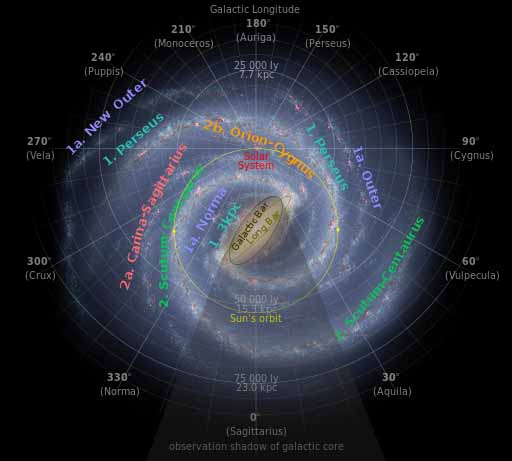
The Orion Arm is a minor spiral arm of the Milky Way Galaxy some 3,500 light-years (1,100 parsecs) across and approximately 10,000 light-years (3,100 parsecs) in length. The Solar System, including the Earth, lies within the Orion Arm. It is also referred to by its full name, the Orion–Cygnus Arm, as well as Local Arm, Orion Bridge, and formerly, the Local Spur and Orion Spur.
The Orion Arm is named for the Orion constellation, which is one of the most prominent constellations of Northern Hemisphere winter (Southern Hemisphere summer). Some of the brightest stars and most famous celestial objects of this constellation (Betelgeuse, Rigel, the stars of Orion's Belt, the Orion Nebula) are located within the Orion Arm, as shown on the interactive map below.
The Orion Arm is located between the Carina–Sagittarius Arm (toward the Galactic Center) and the Perseus Arm (toward the outside Universe), the latter one of the two major arms of the Milky Way. Long thought to be a minor structure, a "spur" between the two longer adjacent arms Perseus and Carina-Sagittarius, evidence was presented in mid 2013 that it might be a branch of the Perseus Arm, or possibly an independent arm segment itself.
Within the Orion Arm, the Solar System, including Earth, is located close to the inner rim in the Local Bubble, about halfway along the Orion Arm's length, approximately 8,000 parsecs (26,000 light-years) from the Galactic Center.
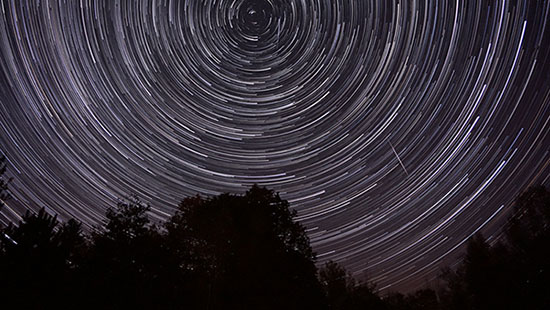
The Orionid meteor shower, usually shortened to the Orionids, is the most prolific meteor shower associated with Halley's Comet. The Orionids are so-called because the point they appear to come from, called the radiant, lies in the constellation Orion, but they can be seen over a large area of the sky. Orionids are an annual meteor shower which last approximately one week in late October. In some years, meteors may occur at rates of 50–70 per hour.
Meteor showers first designated "shooting stars" were connected to comets in the 1800s. E.C. Herrick made an observation in 1839 and 1840 about the activity present in the October night skies. A. S. Herschel produced the first documented record that gave accurate forecasts for the next meteor shower.
The Orionid meteor shower is produced by the well known Halley's Comet, which was named after the astronomer Edmund Halley and last passed through the inner solar system in 1986 on its 75- to 76-year orbit. When the comet passes through the solar system, the sun sublimates some of the ice, allowing rock particles to break away from the comet. These particles continue on the comet's trajectory and appear as meteors ("falling stars") when they pass through Earth's upper atmosphere. Halley's comet is also responsible for creating the Eta Aquariids, which occur each May.
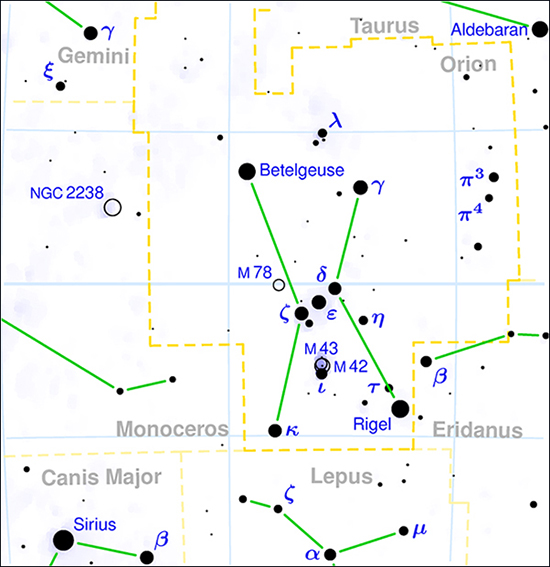
The radiant of the Orionids is located between the constellations Orion and Gemini (in the south-eastern sky before dawn, as viewed from mid-northern latitudes. The most active time of the meteor shower was stated by Telegraph.uk.co to be in the early morning of October 21, 2009 6 a.m. Eastern Standard Time in the United States or 11 a.m. in the United Kingdom. Tweets and user news articles were shared on Social networking and micro-blogging services such as Twitter and Yahoo! Buzz. Photos and videos of the event were posted on photo and video sharing websites such as YouTube and Flickr. Universe Today reported that the meteor shower arrived at 140,000 miles (230,000 km) per hour on the morning of the 21 when showing was predicted to be at its height, however compared to previous showers in years past, the trail of 2009 appeared narrower without branching out. Observers observing the small meteor "Halleyids" at Alabama's Space Flight Center saw streaks radiating in all directions with the naked eye.
In mythology Orion takes us to the Egyptian myth of Isis, Osiris, and Horus - Death and Rebirth
New study sheds light on the mysterious dimming of Betelgeuse in the constellation Orion PhysOrg - August 5, 2021
Betelgeuse is the bright reddish star located in the shoulder of the Orion constellation and can be seen by the naked eye in the night sky.
Is the Ach Valley Tusk-fragment an Ancient Star Map? Astronomy Trek - March 2, 2018
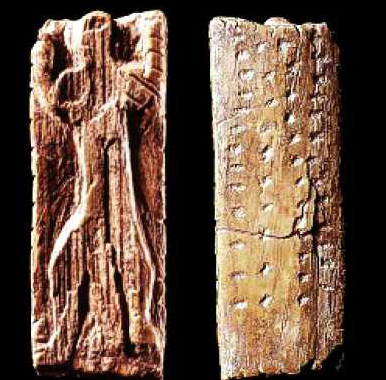
It is said that not everything that glitters is gold, but does this also apply to figurines carved into mammoth ivory fragments during the Ice Age? The Ach Valley tusk fragment that bears the image of an upright human figure is a case in point. Does the figure represent the constellation Orion, which would make it the oldest known star map with an age of about 32,000 years, or is the fragment merely a testament to the skill of the carver, and has nothing whatsoever to do with the stars?
The image above shows the front and back of a carved fragment of mammoth ivory measuring 38 mm x 14 mm x 4 mm that was discovered in 1979 inside the Geibenklosterle cave in the Swabian Alps of south-western Germany. The cave is just one of a complex system of caves that were all inhabited during the Upper Palaeolithic epoch that lasted from about 50,000 to about 10,000 years ago.
'Oldest star chart' found BBC - January 21, 2003
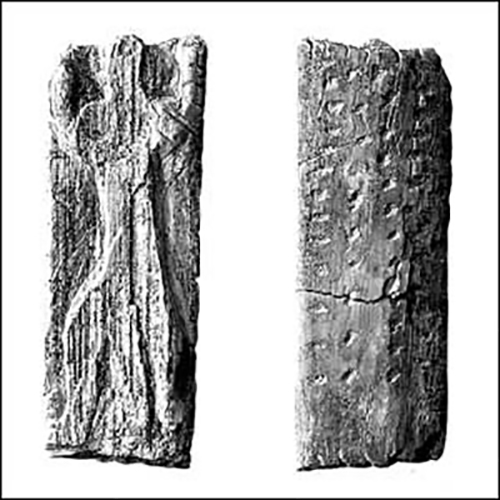
The oldest image of a star pattern, that of the famous constellation of Orion, has been recognized on an ivory tablet some 32,500 years old. The tiny sliver of mammoth tusk contains a carving of a man-like figure with arms and legs outstretched in the same pose as the stars of Orion.
Black hole makes 'String of Pearls' clusters PhysOrg - April 1, 2014
Huge young star clusters resembling a string of pearls around a black hole in the centre of a galaxy 120 million light-years away have been discovered by researchers at Swinburne University of Technology. The galaxy, called NGC2110, is in the constellation of Orion. Supermassive black holes - condensations of matter so dense that not even light can escape from its gravity - are thought to be at the centre of all large galaxies.
Planetary Systems Now Forming in Orion NASA - December 22, 2009
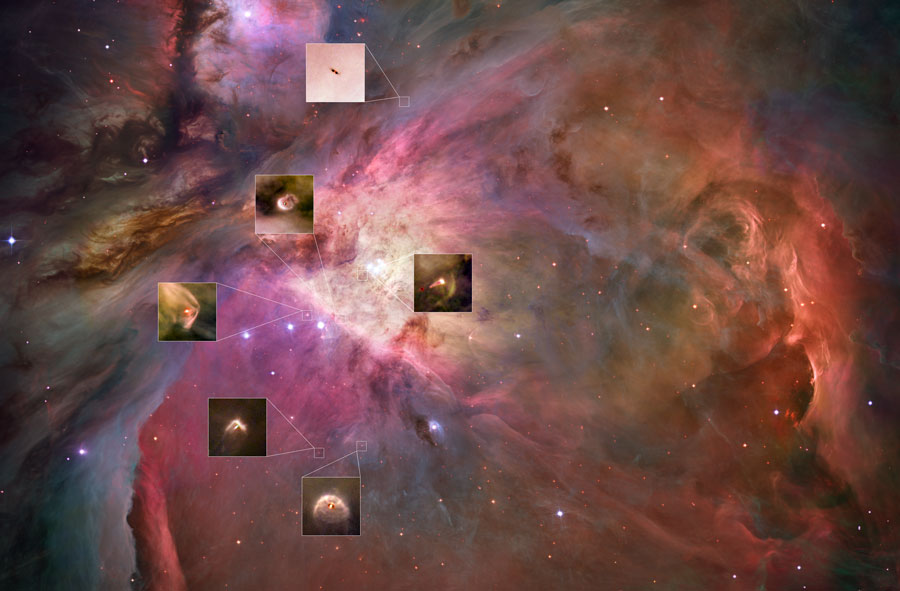
How do planets form? To help find out, the Hubble Space Telescope was tasked to take a detailed look at one of the more interesting of all astronomical nebulae, the Great Nebula in Orion. The Orion nebula, visible with the unaided eye near the belt in the constellation of Orion, is an immense nearby starbirth region and probably the most famous of all astronomical nebulas. Insets to the above mosaic show numerous proplyds, many of which are stellar nurseries likely harboring planetary systems in formation. Some proplyds glow as close disks surrounding bright stars light up, while other proplyds contain disks further from their host star, contain cooler dust, and hence appear as dark silhouettes against brighter gas. Studying this dust, in particular, is giving insight for how planets are forming. Many proplyd images also show arcs that are shock waves - fronts where fast moving material encounters slow moving gas. The Orion Nebula lies about 1,500 light years distant and is located in the same spiral arm of our Galaxy as our Sun.